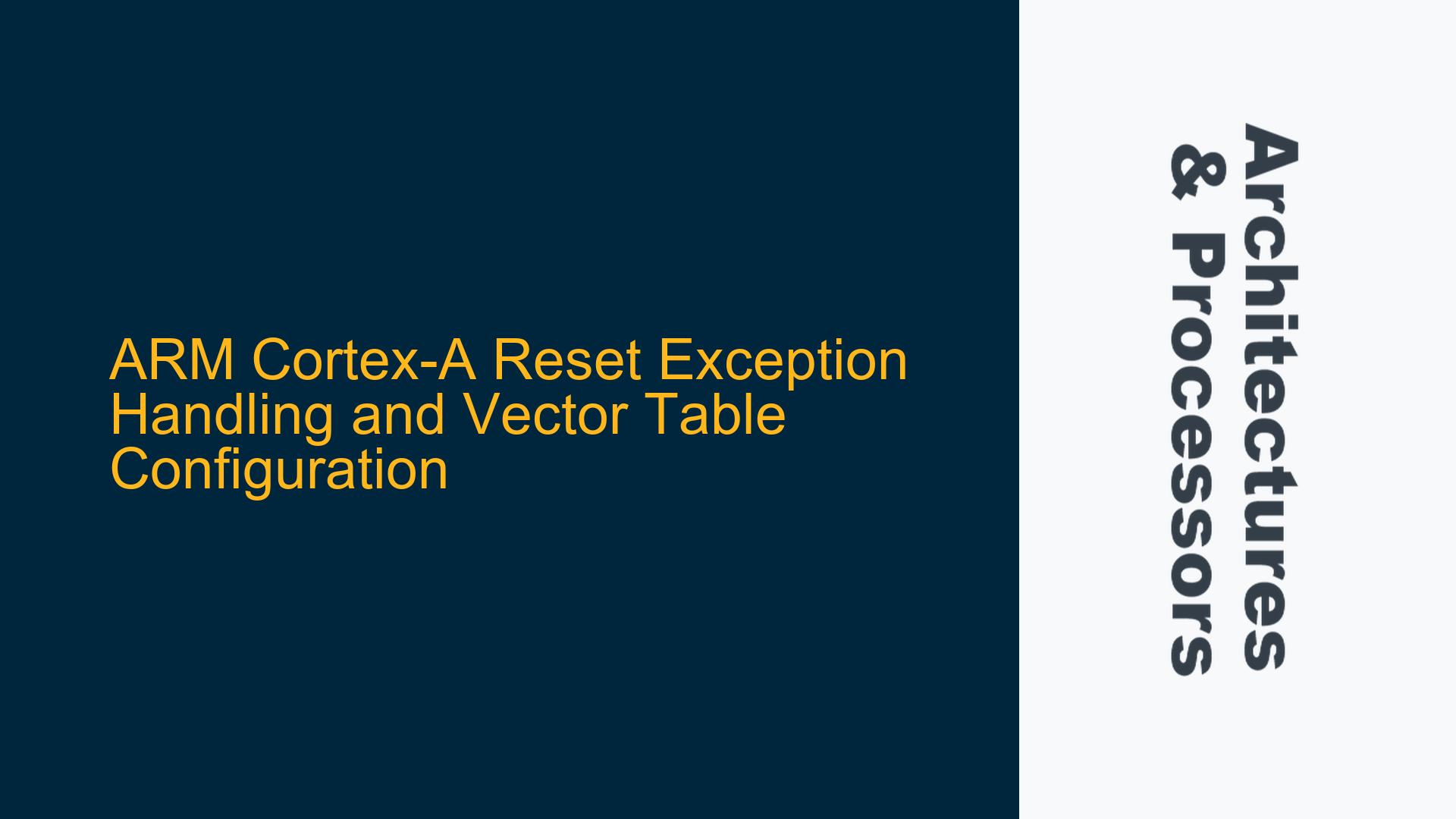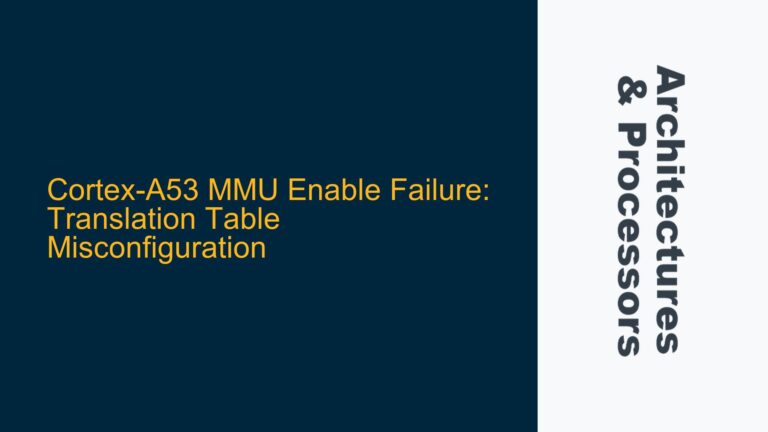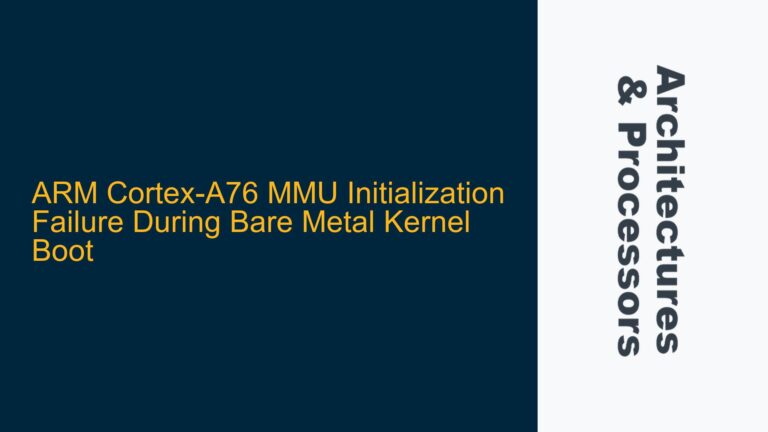ARM Cortex-A Reset Exception Handling and Vector Table Initialization
Upon a hardware reset, the ARM Cortex-A series processors, such as the Cortex-A53, initiate a sequence of operations that culminate in the generation of an exception. This exception is critical for bootstrapping the system and transitioning the processor from a reset state to executing the first instructions of the boot firmware. The reset exception is unique in that it is the first exception generated by the processor after power-up, and its handling is tightly coupled with the processor’s initial configuration and the system’s memory map.
The reset exception vector address is implementation-defined and can be located at either 0x00000000 or 0xFFFF0000, depending on the state of the VINITHI signal. The VINITHI signal is a configuration input that determines the initial value of the VBAR (Vector Base Address Register). The VBAR is a crucial register that defines the base address of the exception vector table, which contains the entry points for various exceptions, including the reset exception.
The reset vector table is not structured in the same way as the standard exception vector table pointed to by the VBAR. Instead, it is typically a simple sequence of instructions that the processor executes immediately after reset. These instructions are usually part of the boot firmware, which is stored in a non-volatile memory such as ROM or flash, mapped to the reset vector address. The boot firmware is responsible for initializing the processor, setting up the memory system, and ultimately branching to the main application code.
VINITHI Signal and RVBAR_ELn Register Configuration
The VINITHI signal plays a pivotal role in determining the initial reset vector address. When the VINITHI signal is asserted, the processor uses the high address range (0xFFFF0000) for the reset vector. Conversely, when the VINITHI signal is deasserted, the processor uses the low address range (0x00000000). This configuration allows system designers to choose the most appropriate memory map for their specific application, taking into account factors such as memory availability, security considerations, and boot time requirements.
The RVBAR_ELn register (Reset Vector Base Address Register for Exception Level n) is another critical component in the reset process. This register holds the address of the reset vector for the current exception level (EL). The value of the RVBAR_ELn register can be read to determine the actual reset vector address being used by the processor. This is particularly useful during debugging or when implementing custom bootloaders that need to be aware of the processor’s initial state.
The RVBAR_ELn register is typically initialized by the processor’s hardware logic during reset, based on the state of the VINITHI signal. However, it can also be modified by software running at higher exception levels, allowing for dynamic reconfiguration of the reset vector address. This flexibility is essential in systems that support multiple boot modes or that need to switch between different firmware images during runtime.
Boot Firmware and Exception Vector Table Format
The boot firmware stored at the reset vector address is responsible for performing the initial setup of the processor and the system. This includes configuring the memory controller, setting up the stack pointer, initializing critical peripherals, and branching to the main application code. The boot firmware must be carefully crafted to ensure that it executes correctly from the reset vector address, taking into account the specific requirements of the processor and the system.
The format of the reset vector table is different from the standard exception vector table. While the standard exception vector table contains separate entries for different types of exceptions (e.g., synchronous exceptions, IRQs, FIQs), the reset vector table is typically a single entry point that branches to the boot firmware. This is because the reset exception is the first and only exception generated by the processor after a hardware reset, and it does not need to differentiate between different exception types.
The boot firmware must also ensure that the standard exception vector table is properly initialized before any other exceptions can occur. This involves setting the VBAR to the base address of the exception vector table and populating the table with the appropriate exception handlers. The exception vector table must be aligned to a specific boundary, typically 32 bytes, to ensure that the processor can correctly locate the exception handlers.
In summary, the handling of the reset exception in ARM Cortex-A processors involves a complex interplay between hardware signals, processor registers, and boot firmware. Understanding the role of the VINITHI signal, the RVBAR_ELn register, and the format of the reset vector table is essential for designing robust and reliable embedded systems. By carefully configuring these components, system designers can ensure that their systems boot correctly and are ready to handle exceptions as they occur.






